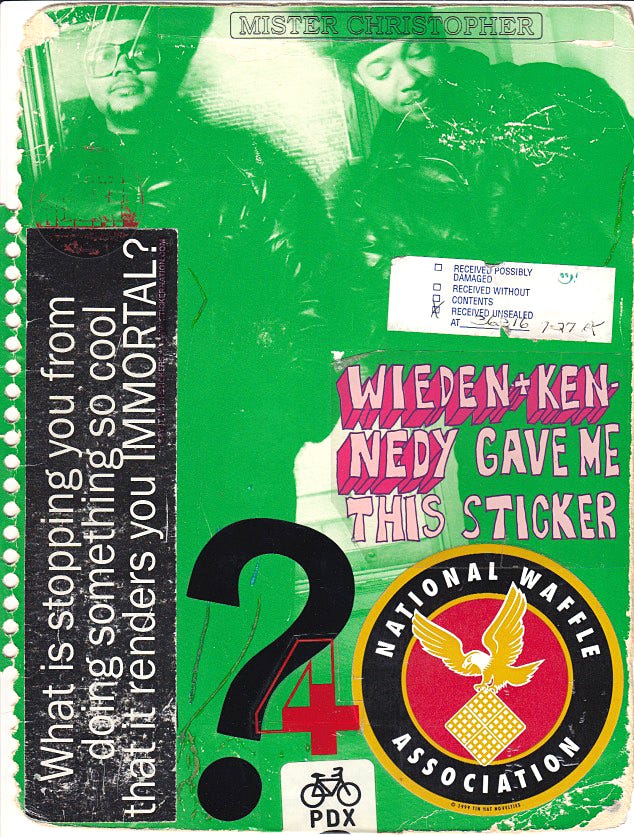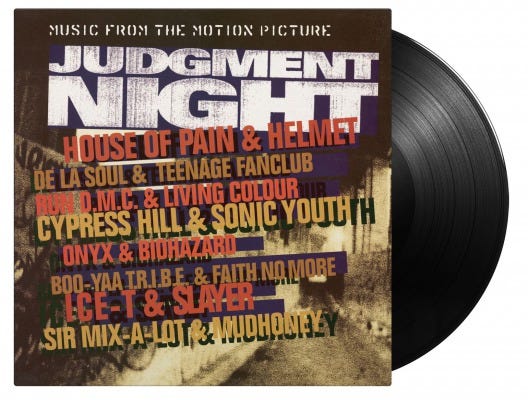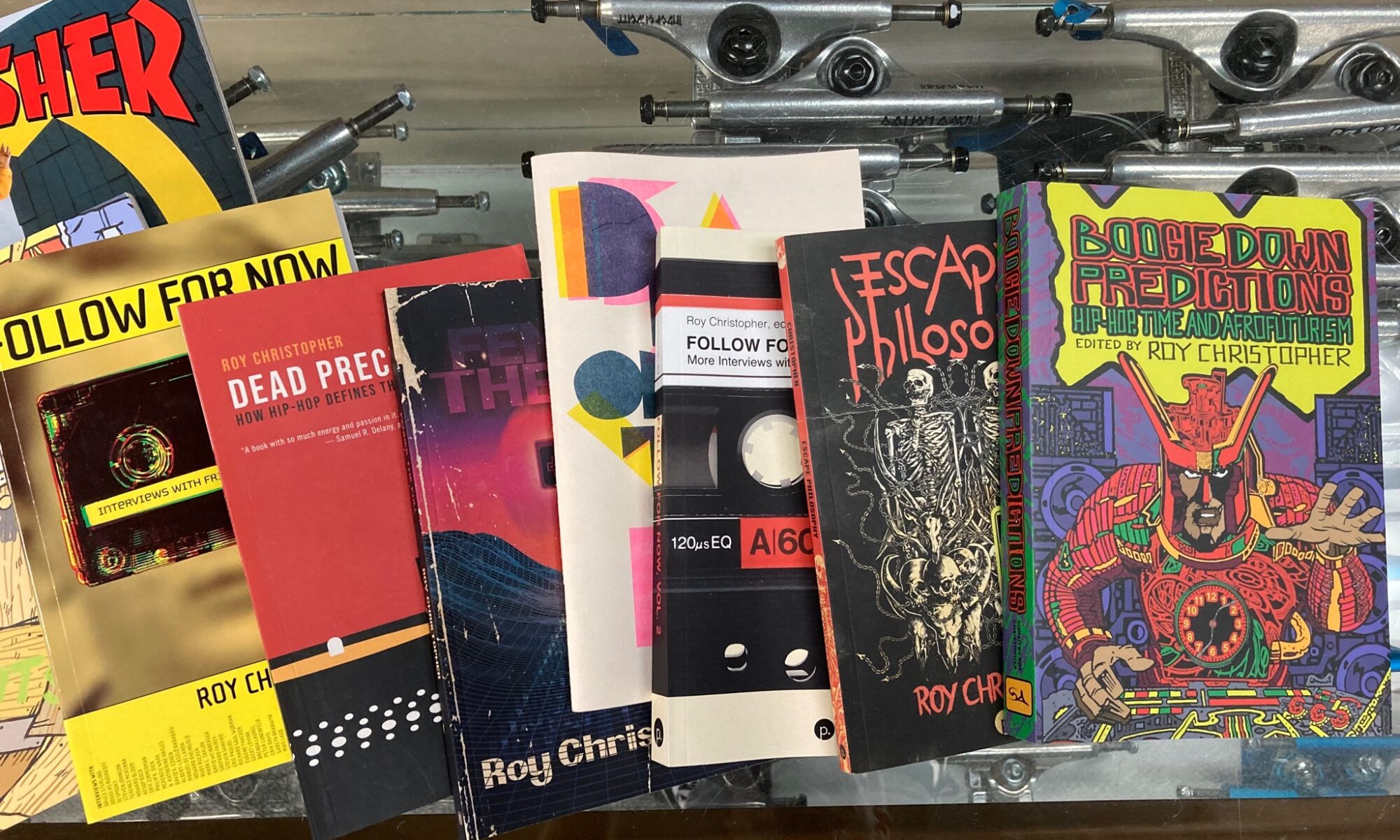I was in the tenth grade when Run-DMC’s “Walk This Way” came out. I remember hearing it and feeling like something truly unique was happening. Raw, raucous, and rocking. It brought together fans of both traditional rock n’ roll and rebellious hip-hop.
Recently, I pitched the song to a book series specifically about individual songs, but they didn’t agree on the impact or the import of it. Well, while I was factchecking my memory, I found out there’s already a whole book about it! There’s no doubt it was a special moment in music, a new node in a burgeoning network of sound.

Aerosmith’s original version of “Walk This Way,” from their 1975 record Toys in the Attic, starts with a few measures of just the beat. It’s just the kind of clean drum beat hip-hop DJs scour recordings to find. With two copies of the record, one can loop it back and forth, providing a seamless backbeat to rap over. Run-DMC’s DJ Jam Master Jay had already been using the record in this manner.
In 1986, Aerosmith was in shambles. Their 1985 reunion record Done With Mirrors had not met the expectations of their fans or their label, and their personal lives were in decline due to persisting drug problems. Starting with singer Steven Tyler, they would all enter rehab over the next couple of years. If not, they knew they were likely over as a band. After rehab and collaborating with Run-DMC on “Walk This Way,” Aerosmith followed the song with a string of multi-platinum albums and Top 40 hits, entering the most successful era of their careers and becoming one of the biggest rock bands of the 1990s. It was a miraculous turnaround.
Though they hated the idea at the time, Run-DMC’s version of “Walk This Way” is a testament to the ear of their producer Rick Rubin. His production style, which he’d already used on previous Run-DMC records, as well as records for T La Rock & Jazzy Jay, the Beastie Boys, and LL Cool J, was credited as “reduction” instead of production. He stripped their sound down to its basic elements: boom-bapping 808 drums, classic-rock guitar riffs, the shouted voices of Reverend Run Simmons and Darryl “DMC” McDaniels, and the nimble cuts and scratches of Jam Master Jay.
As a nascent record label mogul and producer, Rubin was only getting started. The iconic sound he developed with early hits like “It’s Yours,” “Rock the Bells,” “(You Gotta) Fight for Your Right (to Party)” and “Walk This Way” keep him in demand to this day. He’s gone on to produce everyone from Public Enemy, Ghetto Boys, Sir Mix-a-Lot, and Kanye West to the Mars Volta, Metallica, Tom Petty, Johnny Cash, Lana Del Rey, and Adele, and he’s redone the reduced style of his early work on everything from Jay-Z’s double-platinum “99 Problems” (2003) to Eminem’s Grammy-nominated “Berzerk” (2013), even appearing in the videos for both songs.
Speaking of, the video for “Walk This Way” was as iconic as the song. It starts as a fight, with Aerosmith practicing loudly in one room, disrupting Run-DMC’s session next door. Run-DMC then turns up the volume on their equipment and launches into their version of “Walk This Way,” confusing the aged rockers. By the chorus, the wall is torn down (inviting more than a few interpretations), and the two groups are ripping through the song together. The video was even parodied in 1994 by the Jon Spencer Blues Explosion on their song “Flavor” which features Beck in the practice space next door.

For better or worse, “Walk This Way” also sparked the further mixture of rap and riffs, giving birth to collaborations between rap groups and rock groups and a start to acts firmly on the fence in between. Public Enemy and Anthrax covered PE’s “Bring the Noise” in 1991. The two groups even toured together that year. I saw them at the University of Alabama at Birmingham in a chocolate-and-peanut-butter package that also included Young Black Teenagers and Primus. In 1993, the infamous Judgement Night soundtrack featured collaborations between Slayer and Ice-T, Sonic Youth and Cypress Hill, and Dinosaur Jr. and Del the Funky Homosapien, among many other embarrassing pairings. And, as if reading “Walk This Way” as a blueprint to success, acts like Limp Bizkit, Linkin Park, and Rage Against the Machine also emerged in the 1990s.
“Walk This Way” was an unavoidable song and an undeniable hit, Run-DMC’s biggest, peaking at #4 on the Billboard chart. It was bigger even than Aerosmith’s original, which just broke the top ten. Run-DMC is one of the core groups of the first recorded era of rap music and hip-hop culture. They were successful and respected before and after this song, but they never saw heights like “Walk This Way.” The song was the nexus of several trajectories and the birth of a hybrid new life form that still stomps around today.

